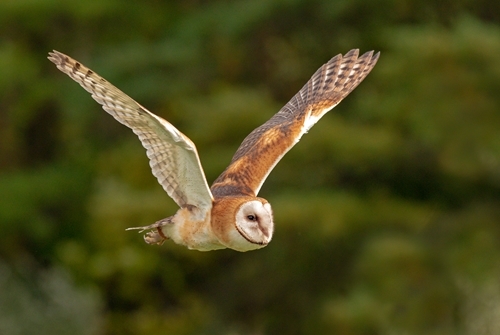
Barn owl breeding success last year was four percent higher, at 2.66 fledglings per nest, than the preceding four-year average, according to a new report from the Campaign for Responsible Rodenticide Use. On the same basis, a 17% increase was also found in the percentage of nests that produced fledglings.
These findings are from the annual Barn Owl Monitoring Scheme (BOMS), one of the formal surveillance studies for the UK Rodenticide Stewardship Regime, operated by CRRU and overseen by a Health and Safety Executive-led Government Oversight Group.
This latest report explains that breeding productivity can vary markedly from year to year. It attributes this primarily to changes at critical times of the breeding cycle in the abundance of prey - mainly voles and field mice - and extreme weather, such as 2013's Beast from the East.
The barn owl is nominated by HSE as a sentinel for other rural predators of small mammals that are also exposed to second-generation anticoagulant rodenticides (SGARs). The BOMS report points out that the impact, if any, of this exposure on barn owl breeding "is difficult to quantify directly".
The scheme's purpose includes to provide context for separate analysis, also funded by CRRU, of rodenticide residues in barn owls. The next annual Rodenticide Residues in Barn Owls report on samples collected in 2019 will be published soon. In the 2018 sample reported last year, detectable anticoagulant rodenticide residues were found in 87% of barn owls.
Regardless whether residues affect breeding performance or not, CRRU chairman Dr Alan Buckle says they are clearly unacceptable and consistent professionalism is essential among all pest controllers, farmers and gamekeepers. "Best practice by a responsible majority is not enough," he urges, "it's a must for everyone, without exception or excuses.
"In 2021, subject of course to easing of coronavirus measures, there will be an official in-depth review of the stewardship regime's implementation and impact on wildlife. To be judged effective, lasting reductions in rodenticide residues carried by non-target wildlife are expected by the oversight group.
"Without such evidence, we might anticipate further restrictions on how rodenticides can be used, and by whom. Clearly, responsibility is squarely in users' own hands."
BOMS and Rodenticide Residues reports can be downloaded from thinkwildlife.org.
Commenting on this report GWCT’s head of Education, Mike Swan said:
“Whilst it is great news that barn owls had a good breeding season in 2019, this is no cause for complacency over the rodenticide issue. The fact that 87% of barn owls contained detectable levels of anticoagulants is a shocking statistic. This is even more so when you realise that they very rarely eat rats – the primary target for rodenticide use in the countryside. This can only mean that significant numbers of non-target animals such as mice and voles are gaining access to rat poisons.
“Gamekeepers have shown an excellent lead in taking up professional training in rodenticide use, and while careful use aims to minimise the risk of exposure to wildlife, there is also much to be done to cut the amount of rodenticide that we need to use. Food put out for pheasants and partridges inevitably attracts rats, but well-organised feeding systems, along with the use of thoughtful feeder designs can dramatically reduce the ease with which rats can gain access. Every gamekeeper should always be thinking about how to stay a jump ahead of the rats, and therefore avoid the need to resort to poisons”.
For some ideas that might help, especially in late winter and spring see this video for tips on making the ultimate rat-proof gamebird feeder.
Reasons for hope
This week, the GWCT received a grant of £123,700 from the government’s Green Recovery Challenge Fund for its Owl Box Initiative. GWCT conservation scientists will work with 100 farms over 40,000ha to inspire farmers and communities to work for the conservation of the iconic barn owl. As a top predator, the barn owl provides an indication of ecosystem health, and conservation measures that benefit owls improve wider farmland biodiversity. By engaging farmers, their families and wider communities in working for the barn owl, the project aims to connect people with farmland wildlife and promote a better understanding of wildlife friendly farming measures.